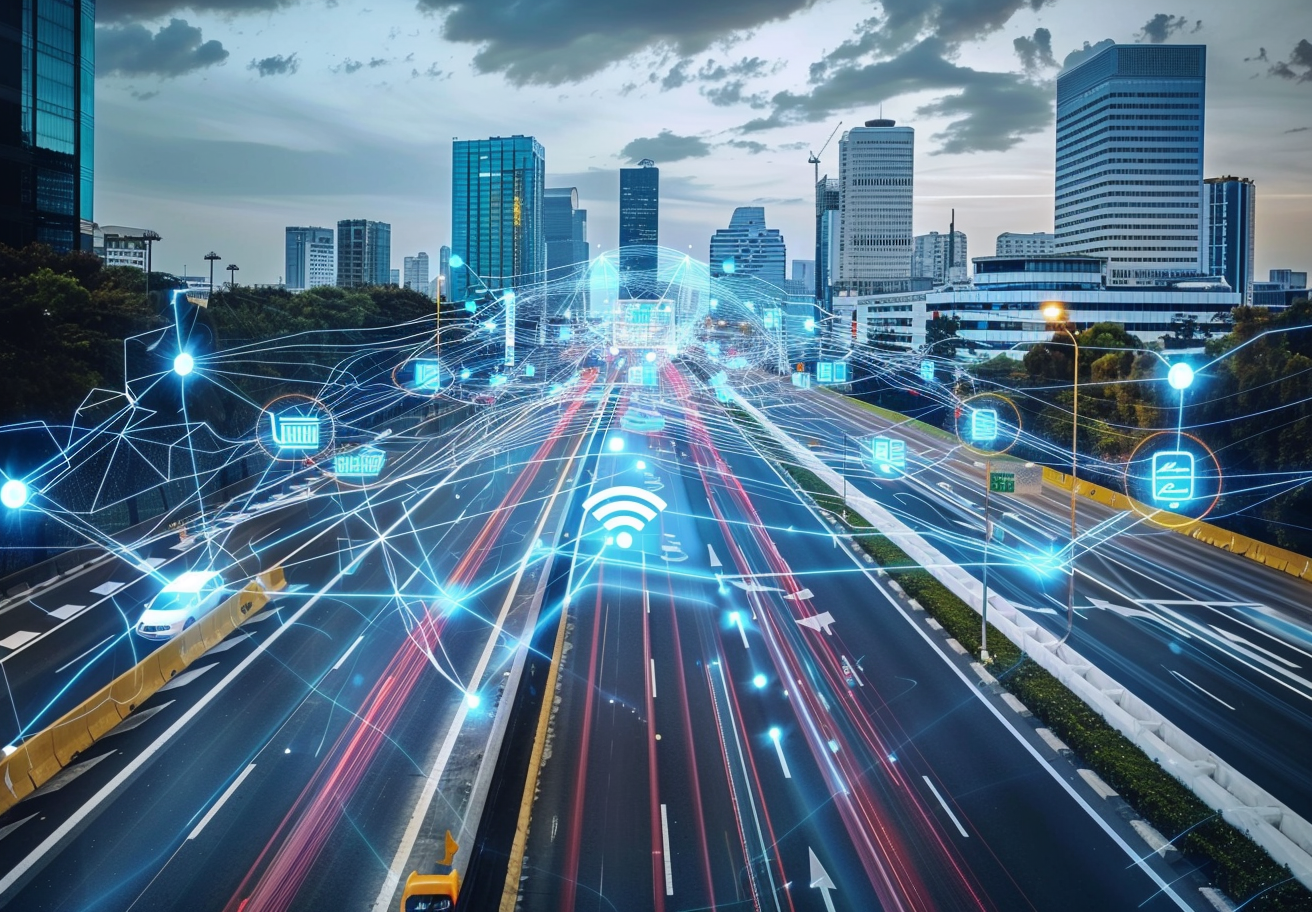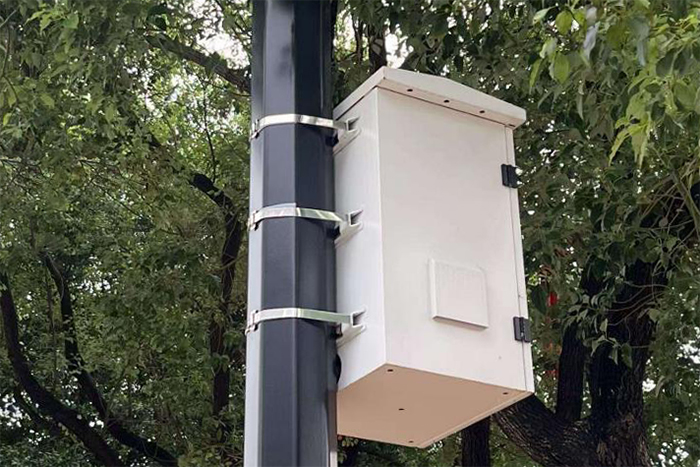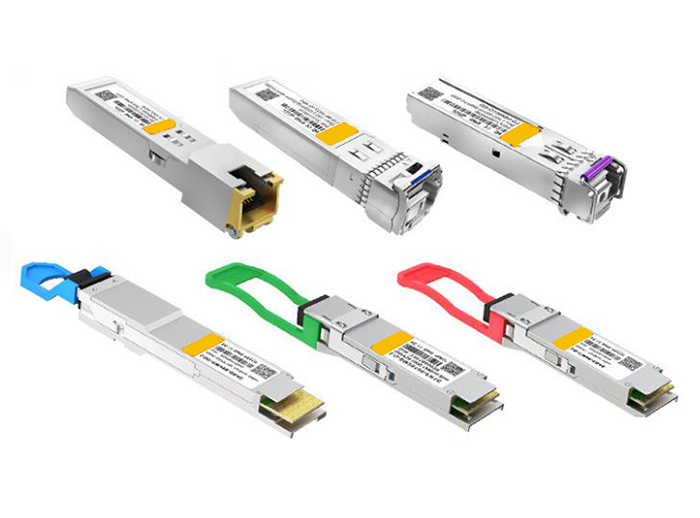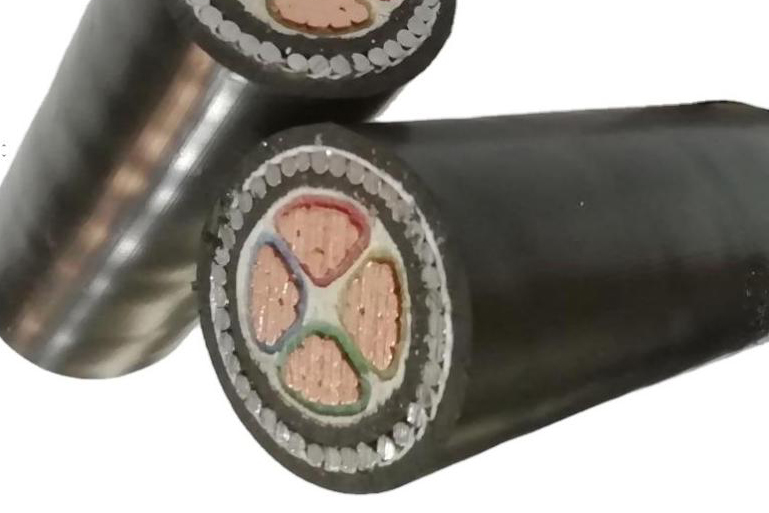
How Fiber Optic Networks Support Green Connectivity and the Future of Smart Cities
Introduction
As urban populations grow and technological advancements continue to shape the future, the concept of smart cities has emerged as a central vision for sustainable, efficient, and livable urban environments. A smart city integrates digital technology to enhance performance, and well-being, and reduce costs & resource consumption across the city. Key to this transformation is green connectivity, where sustainable, energy-efficient, and high-speed communication systems are used to power everything from transportation to energy grids.
At the heart of green connectivity is fiber optic technology. Fiber optic networks have the ability to transmit vast amounts of data at high speeds with minimal energy consumption, making them an ideal solution for building sustainable smart cities. They provide the bandwidth needed for smart infrastructure such as the Internet of Things (IoT), intelligent traffic management, and sustainable energy systems.
In this article, we will explore how fiber optic networks are instrumental in supporting the development of green, efficient, and interconnected cities. We'll look at their role in creating the backbone for modern urban infrastructure, the energy efficiency they offer, and how they align with the environmental goals of smart cities.
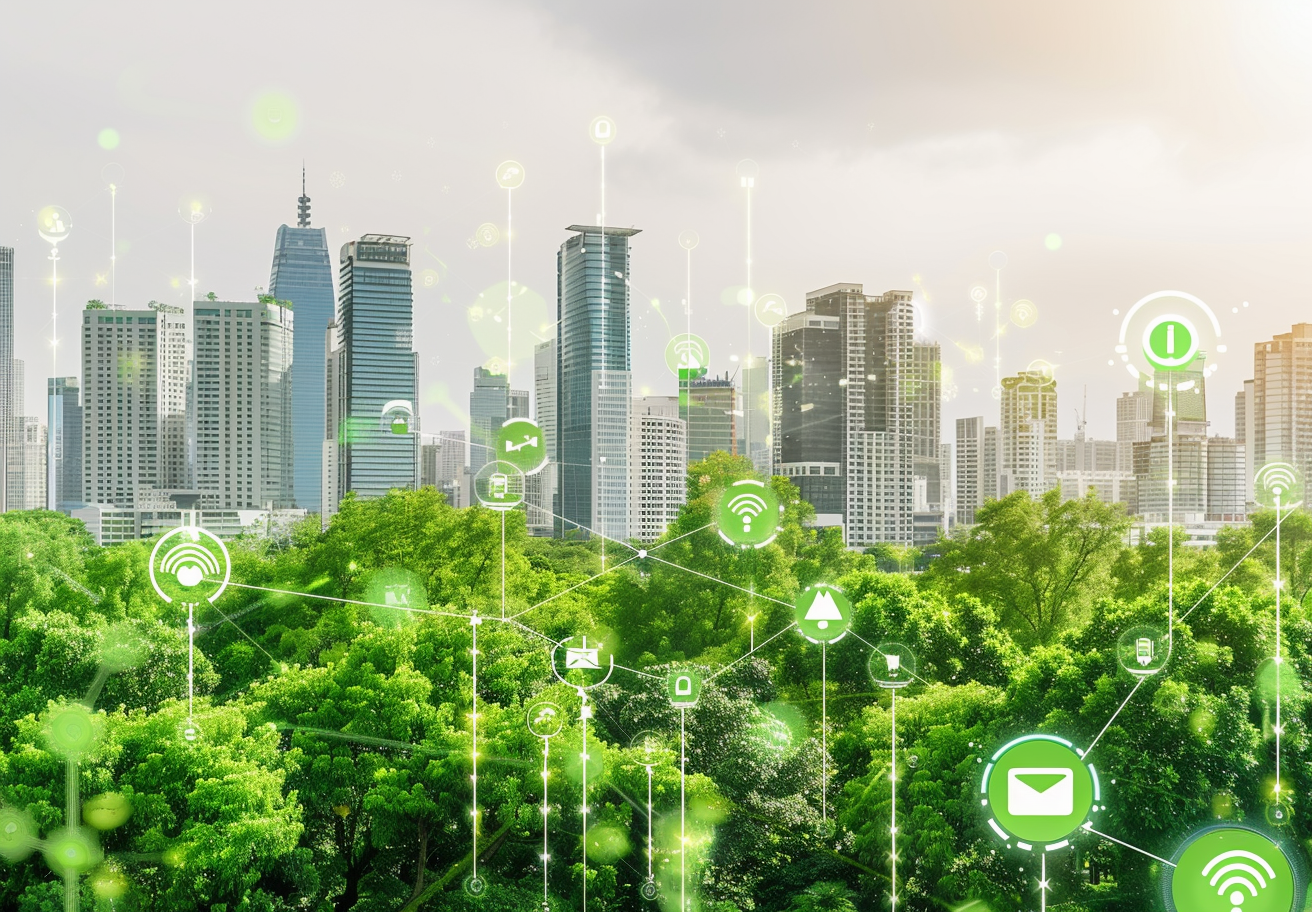
Fiber Optics as the Backbone of Smart Cities
Fiber optic networks serve as the foundational infrastructure for smart cities, enabling the seamless flow of data and powering the technologies that make urban areas more efficient, sustainable, and interconnected. With their unparalleled speed, reliability, and scalability, fiber optics are essential for supporting the demands of modern smart city systems.
Speed and Bandwidth for Smart City Applications
Fiber optic cables provide significantly higher bandwidth and faster data transmission compared to traditional copper-based networks. This high capacity is crucial for managing the enormous volumes of data generated by smart city applications such as the Internet of Things (IoT), real-time traffic monitoring, and public safety systems. For example, a network of smart sensors distributed across a city relies on rapid, uninterrupted communication to collect and process data efficiently. Fiber optics ensure that these systems operate without latency, enhancing their effectiveness.
Reliability for Critical Infrastructure
Smart cities depend on consistent and reliable communication networks to maintain critical functions, such as energy grids, water supply systems, and emergency response services. Fiber optics are immune to electromagnetic interference and environmental disruptions, making them far more reliable than traditional networks. This reliability ensures that essential services can operate smoothly, even under challenging conditions.
Scalability to Meet Future Demands
As cities grow and adopt more advanced technologies, the demand for data transmission will continue to increase. Fiber optic networks are highly scalable, allowing cities to expand their digital infrastructure without significant upgrades to the physical cabling. This adaptability makes fiber optics an ideal choice for smart cities that aim to future-proof their networks and remain at the forefront of innovation.
Energy Efficiency of Fiber Optic Networks
Energy efficiency is a cornerstone of sustainable smart cities, and fiber optic networks play a pivotal role in reducing energy consumption across urban infrastructure. Compared to traditional copper-based systems, fiber optics consume significantly less power while delivering superior performance, making them a greener alternative for modern cities.
Reduced Energy Consumption
Fiber optic cables are inherently more energy-efficient than copper cables due to their transmission mechanism. By using light signals instead of electrical currents, fiber optics minimize energy loss during data transmission. For example, copper cables require amplifiers or repeaters every 100 meters to maintain signal integrity, leading to higher power usage. Fiber optics, on the other hand, can transmit data over distances of up to 100 kilometers with minimal signal degradation, drastically reducing the need for additional equipment and energy.
Lower Carbon Footprint
The energy efficiency of fiber optic networks contributes to a lower carbon footprint for urban communication systems. Cities deploying fiber optics can reduce greenhouse gas emissions associated with electricity consumption, helping them align with global sustainability goals. For example, replacing copper-based networks with fiber optics in data centers or urban internet infrastructure can significantly decrease energy use, resulting in substantial environmental benefits over time.
Supporting Sustainable Infrastructure
Fiber optics enable the integration of energy-efficient technologies, such as smart grids and renewable energy systems. Smart grids rely on high-speed, reliable communication to monitor and optimize energy distribution in real time, reducing waste and improving efficiency. Fiber optic networks provide the necessary bandwidth and reliability to support these systems, enabling cities to transition to more sustainable energy models.
Optimizing Resource Management
In addition to reducing direct energy consumption, fiber optic networks play a key role in optimizing resource management across smart cities. By facilitating the real-time transmission of data from sensors and IoT devices, fiber optics help monitor and manage urban resources like water, energy, and waste more effectively. This efficient data flow allows cities to identify inefficiencies, conserve resources, and reduce overall energy demand.
Enabling Efficient Data Transfer and Resource Management
Fiber optic networks are essential for ensuring the efficient transfer of data across smart city systems, enabling better resource management and enhancing overall sustainability. By providing the high bandwidth and reliability needed for real-time data flow, fiber optics empower cities to make informed decisions and optimize their resource use.
Efficient Data Flow for Smart Grids
Smart grids are a cornerstone of sustainable cities, enabling real-time monitoring and management of electricity distribution. Fiber optic networks facilitate seamless communication between various components of the grid, such as energy generation, storage, and consumption systems. This allows cities to optimize energy distribution, reduce waste, and integrate renewable energy sources like solar and wind power. For example, fiber optics enable utilities to dynamically adjust energy flow based on real-time demand, minimizing inefficiencies and cutting energy costs.
Optimized Water Management
Efficient water management is a critical aspect of sustainability, and fiber optic networks play a vital role in monitoring and controlling urban water systems. By connecting sensors that track water quality, flow rates, and usage patterns, fiber optics enable cities to quickly identify leaks, optimize water distribution, and ensure efficient usage. This not only conserves water but also reduces the energy required for water treatment and transportation.
Streamlined Waste Management
Smart waste management systems rely on real-time data to optimize collection routes and schedules, reducing fuel consumption and emissions from waste collection vehicles. Fiber optic networks provide the high-speed connectivity required for these systems to operate efficiently. For instance, sensors in waste bins can communicate with central systems to indicate when they are full, allowing for better route planning and reducing unnecessary trips.
Environmental Monitoring and Urban Planning
Fiber optics enable the deployment of sensors and IoT devices across cities to monitor air quality, noise levels, and other environmental factors. The data collected can be analyzed in real-time to inform urban planning decisions, such as designing green spaces or adjusting traffic patterns to reduce pollution. This capability supports a cleaner, healthier urban environment while promoting smarter resource allocation.
Fiber Networks for Sustainable Mobility
Fiber optic networks are a vital enabler of sustainable urban mobility systems, providing the high-speed, reliable connectivity needed to manage modern transportation technologies. From electric vehicles to autonomous transit systems, fiber optics support the development of efficient, eco-friendly mobility solutions that reduce carbon emissions and improve urban life.
Smart Traffic Management
Efficient traffic flow is crucial for reducing congestion, fuel consumption, and emissions in cities. Fiber optic networks enable smart traffic management systems by connecting traffic lights, cameras, and sensors in real time. These systems analyze data on vehicle movement, pedestrian activity, and traffic density to dynamically adjust traffic signals, optimize flow, and reduce idling times. This not only improves air quality but also minimizes energy use across the transportation network.
Support for Electric Vehicle Infrastructure
As cities transition to electric vehicles (EVs), reliable communication networks are needed to manage EV charging infrastructure. Fiber optics provide the bandwidth and speed required to support real-time monitoring of charging stations, optimize energy distribution, and prevent overloads. For example, a fiber-enabled smart grid can allocate energy efficiently to EV charging stations based on demand, ensuring sustainable energy use while accommodating the growing number of EVs on the road.
Facilitating Autonomous Vehicles
Autonomous vehicles (AVs) rely on low-latency, high-bandwidth networks to process vast amounts of data in real time. Fiber optics provide the speed and reliability required to connect AVs with traffic management systems, cloud servers, and other vehicles. This enables AVs to navigate safely, avoid collisions, and respond dynamically to changing traffic conditions, paving the way for safer and more efficient urban mobility.
Public Transportation Optimization
Fiber optic networks are essential for smart public transportation systems, which aim to improve efficiency and reduce environmental impact. By integrating real-time data from GPS, ticketing systems, and passenger flow sensors, fiber-enabled transit systems can optimize routes, reduce delays, and enhance the passenger experience. Additionally, smart buses and trains can use fiber optics to communicate with central systems, ensuring seamless coordination and minimal energy waste.
Reduced Carbon Emissions
By enabling technologies that improve traffic efficiency, support EVs, and facilitate shared and autonomous transportation, fiber optic networks contribute to significant reductions in urban carbon emissions. These advancements not only align with global climate goals but also improve air quality and overall quality of life in cities.
Supporting Green Connectivity in Urban Areas
Fiber optic networks are at the core of green connectivity, enabling urban areas to transition toward more sustainable and energy-efficient solutions. By providing reliable, high-speed communication, fiber optics empower technologies that support renewable energy systems, enhance resource management, and foster a greener urban ecosystem.
Enabling Renewable Energy Integration
The shift toward renewable energy sources, such as solar and wind, requires robust communication networks to ensure efficient integration into urban energy grids. Fiber optics facilitate real-time data exchange between energy producers, storage systems, and consumers, allowing cities to balance supply and demand more effectively. For instance, fiber networks enable smart grids to dynamically adjust energy distribution based on renewable generation levels, minimizing waste and maximizing efficiency.
Improving Communication for Urban Sustainability Projects
Green initiatives such as urban farming, vertical gardens, and energy-efficient buildings rely on advanced monitoring and control systems. Fiber optic networks provide the connectivity required to manage these systems, ensuring that they operate efficiently. For example, real-time monitoring of energy usage in smart buildings can optimize heating, cooling, and lighting systems, significantly reducing overall energy consumption.
Empowering Smart Urban Services
Fiber optic networks underpin smart city services that directly support sustainability efforts, such as smart waste management, air quality monitoring, and water conservation systems. By connecting IoT sensors across urban areas, fiber networks facilitate the seamless flow of data to central systems, enabling cities to track and optimize resource use. This level of connectivity helps reduce waste, prevent overuse, and respond quickly to environmental changes.
Reducing Environmental Impact
The adoption of fiber optic networks reduces the environmental footprint of urban communication systems in several ways. Fiber cables are thinner and lighter than copper cables, requiring fewer raw materials and generating less waste during production and installation. Additionally, the lower power consumption of fiber optic networks decreases greenhouse gas emissions, aligning urban areas with global climate and sustainability goals.
Promoting Green Lifestyles
By supporting high-speed internet and digital connectivity, fiber networks enable green lifestyles for city residents. Telecommuting, remote work, and virtual collaboration reduce the need for daily commuting, lowering vehicle emissions and traffic congestion. Additionally, fiber-powered smart cities make it easier for residents to access green technologies and services, such as electric vehicle charging stations and community solar programs.
Challenges and Opportunities for Fiber in Future Smart Cities
While fiber optic networks are essential for the development of smart cities, their deployment comes with unique challenges. However, the long-term opportunities they provide far outweigh these obstacles, positioning fiber optics as a cornerstone of future urban infrastructure.
Challenges in Deploying Fiber Optic Networks
-
High Initial Costs: The installation of fiber optic networks requires significant upfront investment. Costs include materials, specialized equipment, and skilled labor. This can be a barrier for cities with tight budgets or those in developing regions.
-
Infrastructure Limitations: In older cities with dense infrastructure or limited space for new construction, installing fiber optic cables can be logistically complex. Retrofitting existing systems to accommodate fiber may also require extensive planning and resources.
-
Maintenance in Harsh Environments: Although fiber optics are durable, they can be vulnerable to damage during natural disasters or in areas with unstable ground conditions. Maintaining and repairing these networks requires specialized expertise, which may not always be readily available.
-
Digital Divide: In some areas, particularly rural or underserved urban regions, fiber optic deployment lags behind, exacerbating the digital divide. Ensuring equitable access to fiber networks is a challenge that must be addressed to realize fully inclusive smart cities.
Opportunities for Fiber in Smart Cities
-
Future-Proof Infrastructure: Fiber optics offer scalability that no other network technology can match. Their ability to handle increasing data demands makes them an investment that supports the continuous growth and evolution of smart city technologies.
-
Enabling Advanced Technologies: Fiber networks are critical for powering next-generation technologies such as 5G, autonomous vehicles, and AI-driven systems. These technologies are essential for creating efficient, sustainable urban environments and improving the quality of life for residents.
-
Supporting Green Initiatives: Fiber networks reduce energy consumption and enable sustainable urban practices, such as renewable energy integration, smart grid management, and efficient waste and water systems. Cities leveraging fiber optics can make significant strides in reducing their carbon footprints.
-
Economic Growth: Investing in fiber optic infrastructure can stimulate local economies by creating jobs during installation and enabling businesses to thrive with reliable, high-speed internet. This connectivity can attract tech companies and startups, fostering innovation within the city.
-
Bridging the Digital Divide: As governments and private entities invest in expanding fiber networks, there is an opportunity to bridge the digital divide by providing high-speed connectivity to underserved areas. This inclusion ensures that all residents can benefit from smart city advancements.
Overcoming Challenges with Collaborative Efforts
Addressing the challenges of fiber deployment requires collaboration between governments, private companies, and community stakeholders. Public-private partnerships, subsidies for underserved areas, and investments in training skilled technicians can help overcome these barriers. By prioritizing equitable access and efficient deployment strategies, cities can unlock the full potential of fiber optic networks.
Conclusion
Fiber optic networks are the backbone of sustainable, smart cities, providing the speed, reliability, and scalability necessary to support green connectivity and innovative urban solutions. From enabling efficient energy management and resource optimization to powering sustainable transportation and renewable energy systems, fiber optics play a pivotal role in reducing environmental impact while enhancing the quality of urban life.
Despite challenges such as high initial costs and infrastructure limitations, the opportunities presented by fiber optics far outweigh these obstacles. By investing in fiber optic infrastructure, cities can future-proof their networks, bridge the digital divide, and foster economic growth while aligning with global sustainability goals.
As a leader in fiber optic technology, Stanford Optics is committed to providing high-quality, energy-efficient solutions to support the development of sustainable urban infrastructure. Our innovative products and expertise enable smart cities to thrive, delivering reliable and future-ready connectivity for businesses, governments, and communities.
Building a greener, smarter future starts with the right foundation. Contact Stanford Optics today to learn more about how our fiber optic solutions can help transform your city into a model of sustainability and innovation.

